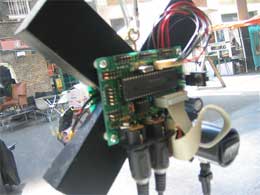 Yesterday afternoon i went to the Kinetica museum in London. It’s a big glass box space located right in the middle of the Old Spitalfields Market, a place where people buy fake vintage t-shirts while munching on their organic sandwiches.
Yesterday afternoon i went to the Kinetica museum in London. It’s a big glass box space located right in the middle of the Old Spitalfields Market, a place where people buy fake vintage t-shirts while munching on their organic sandwiches.
Soundwaves, the museum’s current exhibition focuses on artworks that explore, warp, collect and manipulate sound and it is really good.
Favourite piece is Julie Freeman‘s Specious Dialogue. It took me a while to notice the existence of these unassuming cubes on wheels. They are made in concrete and can be pushed, rolled, kicked (didn’t try) and shoved around the gallery.
The white cube is the “listener”. If the sound around it suddenly gets louder – if someone knocks it, whistles, speaks, or shouts at it – it will start recording and store the sound (active mode). Sometimes the recorded sound will be passed to the black form for playback after a few seconds, sometimes it will be stored for future use, inserting it into someone else’s dialogue.
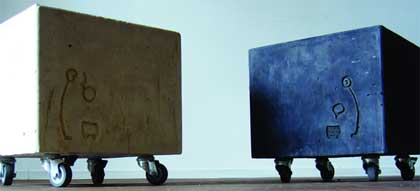
The grey form is the “speaker”. It constantly outputs its chatter. Which sounds is it speaking is determined by two factors – the distance between it and its white friend and whether or not the system is in active mode.
In active mode, the microphone in the listener allows contributions to be fed into the work, and the pre-recorded dialogue changes from personal to public. Pre-recorded sound clip harvested from all over the world are interwoven with recordings from the gallery and played back. Volume, distortion and tempo is altered capriciously, often changing the live and existing recordings into mumbles.
When the work it is the distance between the cubes that dictates which conversational fragments are played. Up close, they laugh, but also voice their contempt. When far apart they miss each other, but also they are angry and need their space.
Other works i liked:
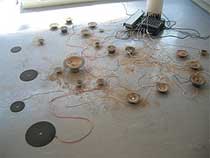
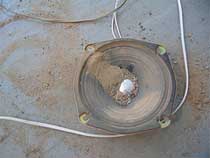
Lu Clarke & Jaye Ho have scattered 22 speakers near one of the entrances of the museum. The speaker diaphragms contain dust and dirt. When you enter the space, the sound of your footsteps captured by the contact microphones hidden under the floor and processed by a reverb effect-unit to repeat and echo. The sound is made visible throught the diaphragm that vibrates and agitates the dirt.
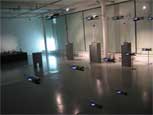
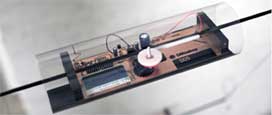 Martin Hesselmeier and Karin Lingnau’s SARoskop is made of 25 objects hanging from wires from the ceiling and reacting to their electromagnetic environment, transforming the data into movement and oscillations.
Martin Hesselmeier and Karin Lingnau’s SARoskop is made of 25 objects hanging from wires from the ceiling and reacting to their electromagnetic environment, transforming the data into movement and oscillations.
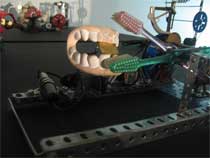
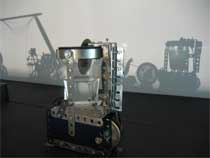
Upstairs a lovely orchestra of teapots, toothbrushes and other household objects by Pierre Bastien is playing with its shadow.
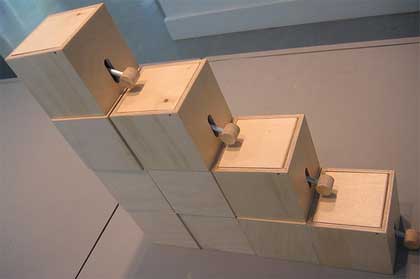 Andy Huntington‘s marvellously simple tapTap wooden boxes. Each box has its own memory and is self-contained. Tap on a box and a few seconds after the box taps back your knock. Tap on several boxes and they will all repeat your composition. The more boxes you use, the more complex the rhythm lines. By tapping for longer than the delay period, you play a duet with tapTap as it repeats your earlier rhythm.
Andy Huntington‘s marvellously simple tapTap wooden boxes. Each box has its own memory and is self-contained. Tap on a box and a few seconds after the box taps back your knock. Tap on several boxes and they will all repeat your composition. The more boxes you use, the more complex the rhythm lines. By tapping for longer than the delay period, you play a duet with tapTap as it repeats your earlier rhythm.
Image on the top left corner is from Michael Markert‘s installation kill 2.1.
My images.
Soundwaves, a collaboration with Cybersonica, runs until 29 June, at the Kinetica Museum in London.
